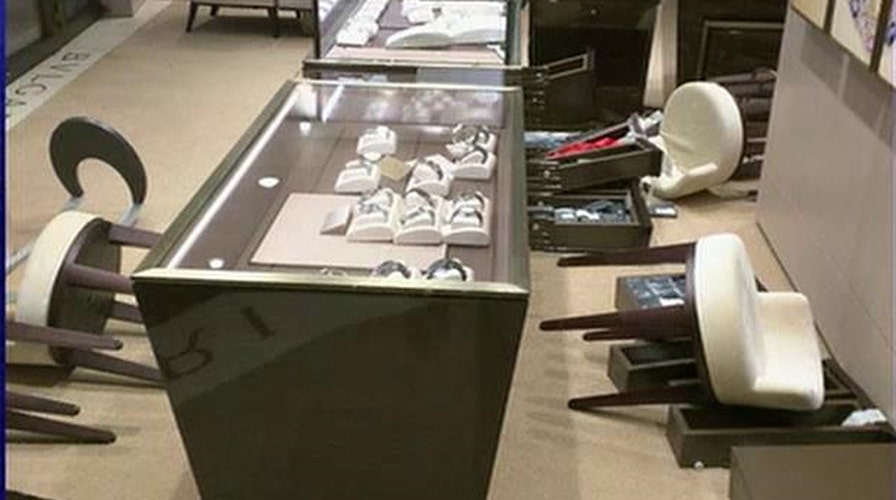High winds rock cruise ship out at sea
Winter storm buffeted a Royal Caribbean cruise ship, sending objects tumbling
It was a scary night Sunday for the passengers aboard the Royal Caribbean cruise ship Anthem of the Seas as hurricane-force winds off the Carolina coast rocked the massive vessel.
Images of chairs and objects being tossed about as the ship hit 30-foot waves amid wind gusts of 74 mph is a reminder that even the largest ships aren't immune to the power of the sea.
Royal Caribbean says the ship’s seaworthiness wasn't affected, but to be on the safe side, the captain asked all guests to stay in their stateroom.
Despite the disturbing images, the chance of a cruise ship sustaining major damage in a storm is actually fairly small. Today’s cruise ships are built to withstand high winds and they have technology on board to monitor storms and help right a ship if it encounters high seas.
So what really happens when a cruise ship hits a storm?
Check the weather:
Even before a ship gets near a storm, the crew is monitoring the weather along the route and at its port of call. There are several places they check in with, including Global Maritime Distress and Safety System, where different stations transmit weather information and advisories, and websites such as the National Oceanic and Atmospheric Administration (NOAA). Based on the information, the captain and nautical team will come up with a plan, notify the cruise line team on shore and keep passengers and crew abreast of any changes.
Change course:
When faced with a hurricane or other storm in its path, a cruise ship will try to sail around the bad weather, which was the case with Anthem of the Seas. If the captain decides it's too dangerous to proceed with the scheduled itinerary, he or she might chose to skip a port, add an extra days at sea, or swap out the missed port for a new port. Yet, captains can't dodge every storm. The fuel alone on ships can be tens of thousands of dollars a day, so a two or three day delay or deviation can cost big bucks.
Steering through storm:
Even if the crew tries to steer clear of a storm, there could be times of rough seas. Often, the safest place for a ship during a storm is out at sea because the ship is a safe distance from anything it might crash into. But doesn’t mean the ship is just floating aimlessly. The captain will want to propel the ship forward with enough power to steer rather than just getting pushed around by waves and wind. To ensure the vessel isn’t damaged, the ship must keep its front end pointing into the waves to plow through them safely.
Minimizing the rock and roll
When the ship tilts on any of its sides and doesn’t return back to its upright position, it is known as heeling. Cruise ships are equipped with anti-heeling system --called stabilizers -- that automatically detect the heeling angle of the ship and compensates for it. The stabilizers extend out from the side of the hull like airplane wings. They can pivot up and down and as the water flows over them to help counter the movement of a wave. For example, a 20 degree roll on a ship may be mitigated to just a 5 degree roll. Yet, stabilizers don’t help with with pitching (movement front to back). For this reason, modern cruise ships often have a longer and narrower bow --(or front of the ship) to cut through the waves.
Bigger may be better
The most dangerous ship in a storm is an empty one. Passengers and cargo help stabilize a ship against the waves. Even today’s mega-cruise ships, which can be as tall as 17 story buildings and hold more than 4,000 passengers, are made with wide hulls to displace an equal amount of water to how much it weighs. Large cruise ships also take on sea water known as ballast, to help stabilize the boat. Yet, some security experts say the bigger the cruise ship, the bigger the problem. After the 2013 ill-fated Carnival Triumph cruise, where the a small fire quickly crippled the vessel, the industry instituted regulations requring redundant electrical system able to maintain the propulsion system, steering and steering control systems, and other systems vital to safety and survivability.

